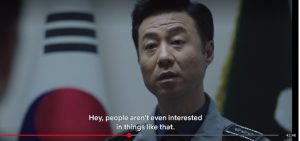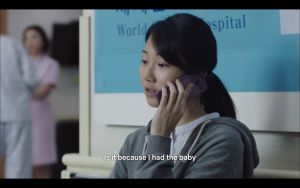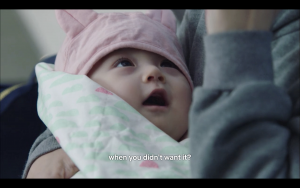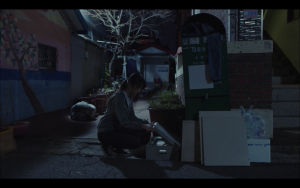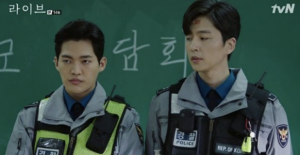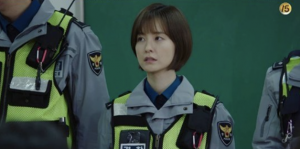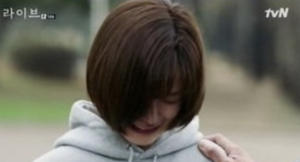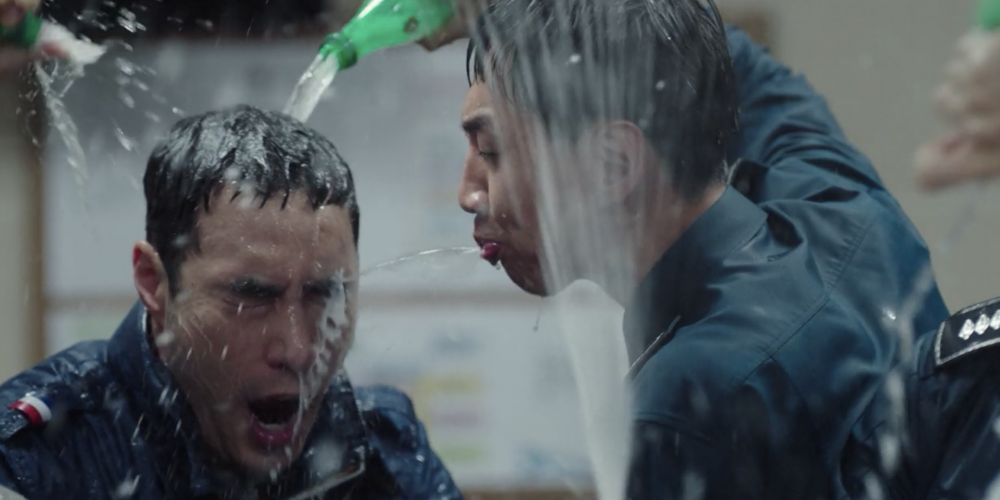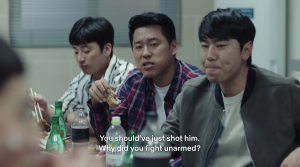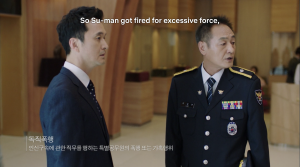Contemporary Gender-related Issues in Korean Society
So Youn Chung
#99902181
ASIA 367 – 002
Word Count: 3270
Introduction
The gender issues are happened in everywhere, but some countries still do not realize the issues are serious. South Koreans recently realize how the gender-related issues are serious now. In particular, Korean women are facing gender-related issues which are gender discrimination in workplace, sexual abuse, and the victimization from violence. However, Koreans do not know well how to cope with these gender-related issues because Korea is one of strong patriarchal societies, so traditionally, those gender-related issues are accepted implicitly. For redressing the wrongs, women recently start movement for their rights, and men are thrown in confusion. However, there is a problem because some women ridicule men seriously, even though men do not know the exact reasons why women laugh at. Therefore, to solve this problem between women and men and to give a good notion of gender-related issues, one of famous Korean drama, “Live” (2018, tvN, Kim Gyutae), clearly shows the issues that can arise in the lives of Korean women. This drama emphasizes women’s common experiences in Korean society, so it can lead male viewer to think of what the problems are faced for women. Thus, for this paper, I argue through the gender issues raised in “Live” such as gender discrimination, sexual abuse, and spousal violence, the actions and attitudes held by the male police officers provide a new lens for perception of gender issues for the male viewers.
Gender Discrimination towards Women
In 21st century, equality has come to a level where men and women are almost treated identically, but the gender inequality is still easily found in any societies and leads a global issue. The major issue of gender inequality is female participation into workplace. In workplace, both men and women cooperate each other for better results and efficiency. However, people, especially men, have a stereotype towards women, which is their role is a mother as a supporter of their husband or children in home (Patterson & Walcutt 2013:86). This stereotype is applied to most women, so due to this stereotype, many women struggle to find a job or to promote. Moreover, some people think that women cannot complete the works with great results. For example of western society’s gender inequality, Silicon Valley which technology related jobs are concentrated invests a lot of money for better female conditions (Mundy 2017). However, people have a stereotype that technology related jobs are male-dominated jobs, so women are treated unfairly (Ibid.). They eventually leave technology industry and this rate is 2 times higher than men (Ibid.). As this example, gender inequality towards women in workplace is occurred. Particularly, many Korean women experience gender discrimination in workplace because Korea is one of strong patriarchal societies which is closely related with Confucian ideology (Stainback & Kwon 2012:219). According to Stainback and Kwon, “Women have been required to follow the Confucian virtues of subordination, endurance, and restriction from participation in social activities, and they are regarded as inferior to men in social status” (2012: 219). This Confucian ideology supports Korean society to become a strong patriarchal system, and this system undermines women. This common gender discrimination in workplace are depicted well in the drama, “Live”.
The drama, “Live”, clearly shows that gender discrimination towards women in workplace through the main character, Han Jeong-O. In episode 1, Han Jeong-O wanted to become a career woman in the future. However, in reality, she could not find a job, and realized that being a woman is a problem in workplace. The reason that she felt is when she interviewed, the male interviewer kept asking discriminative questions such as “Are you going to take care of a personal matter such as babysitting if you are asked?” and “are you going to keep working after getting married?” (Live, ep. 1, 11:10-16). On the other hand, the male interviewer asked the personal questions such as military service or academic background to a man which drew the bond of sympathy, so he was eventually accepted to the company (2018, tvN, Kim Gyutae: ep.1). As Live (2018, tvN, Kim Gyutae) shows, Korean women usually receive non-related and discriminative questions during the interview, whereas the man interviewees are asked the personal questions for knowing the common experiences which make them feel comfortable and can encourage them. This uncomfortable questions during interview towards female are studied and found that women usually receive 60% of the questions related to family planning and 30% of the questions about childcare, while men only receive 10% of the family planning questions and 5% of the questions about childcare (“Most Job Applicants” 2017). Based on this news, the stereotype which is created by the patriarchal systems and the interview questions to women are related because the organizations consider women’s traditional role and have a doubt about their work ability.
On the other hand, male police officers in “Live” do not discriminate women. In episode 2, the characters are trained before they become a formal police officer. O Yangchon who is a police officer, however, do not accommodate women, even though the training is very harsh and required great physical strength. They both women and men receive equal training because he wants everyone to become a good police officer without the gender discrimination. Through this harsh training, the drama implies that women can do things, which men do, too and breaks the gender bias towards women that women are weak, so they may not complete the harsh training. Especially, from 53:20 to 54:02 from episode 1, O Yangchon looks the woman as a police officer before she is a female (2018, tvN, Kim Gyutae). Also, in episode 2, Gi hansol shouts to all rookies, Han jeong-o, Yeom Sangsu, and Song Hyeri, “The last rookie to take the squad car will be killed” (Ep 2, 1:10:10 to 1:10:17). This statement does not contain any gendered discriminative words and divide the gender roles that sometimes undermine women’s work ability. Furthermore, in episode 4, Han Jeong-o tried to make a cup of coffee for O Yangchon, but O Yangchon scolded her that “you are a cop, why do you serve coffee continuously?” (ep. 4, 21:45-21:48). This scene tries to convey using the character, O Yangchon, that serving coffee which is invisibly one of female role in workplace is understandably not a women’s job in the workplace. Like these examples from the drama, “Live”, male police officers treat women equally as a co-worker and police officer as male police officers treat men. They do not look that women are weak due to the gender bias and stereotype.
In addition, Koreans highly regard their appearance (Elfving-Hwang 2013:1), so Korea has higher rates of receiving plastic surgery (Lee et al 2017:2). Most women are considered their appearance in workplace, especially airline related jobs, service jobs or broadcasting jobs, as important as their work ability (Malos 2007:98). The organization usually judge applicants using resume before interview, so when the organization hires people, they highly consider how they are fit into the organization. Due to this purpose, Korean companies require to put applicants’ picture on the resume before they interview to know how they are fit into the organization. However, judging appearance by the picture is applied more towards women than men, and this leads gender discrimination towards women in Korean workplace. A reason of judging appearance by the picture is more applied to women than men is that most men are positioned higher than women which means they have more power than women in the hierarchy (Stainback & Kwon 2012:220), and male interviewers proceed interview and give offers to applicants, which are also shown in episode 1 from “Live”. According to Holliday and Elfving-Hwang, Korean women exchange their beauty such as slim body and beautiful face with the offers from work (2012:75). This finding supports that female workers are trying to be fit into ideal beauty images for the male workers who are high positioned. Besides, some jobs such as flight attendants, broadcasting journalists, or restaurant servers have specific appearance criteria for women such as heights, weights, hair colour, or makeup (Malos 2007:98). Furthermore, Elfving-Hwang states that appearance an important factor for gaining offers in the customer-oriented workplace, and gaining ideal appearance through plastic surgery can lead success (2013:4). Through some other articles’ findings, female workers are discriminated in workplace due to their appearance, unlike men. Therefore, Korean women receive the plastic surgery for the chance to gain the offers from the work and to succeed in the workplace. These makes women think of their appearance importantly in Korean society and workplace
The drama, “Live” shows differently about this discrimination. To become a police officer from South Korea, people should pass the test beforehand. They do not have to send in their resume, so due this system which is more fair than sending in resume, the male police officers cannot discriminate women, and male police officers including O Yangchon do not care how female police officers look. Rather, they want their rookies to do their work well. O Yangchon repeatedly told to their rookies, Han Jeong-o, Song Hyeri, and Yeom Sangsu, that “do your work well”(“Live”, 2018, tvN, Kim Gyutae). Also, O Yangchon got married with An Jangmi who are older than him. An Jangmi is a very respectful person in the police station because she does her works very well. Due to this reason, O Yangchon likes An Jangmi and respects her as a co-worker. Through O Yangchon’s attitudes towards women including female rookies and An Jangmi, the male viewers reconsider the female workers because he does not care the appearance and discriminate women due to the age, but he cares having great work ability. The male viewers can have new perceptions towards women that they are also same workers like themselves, and men can be learned from a respectful female worker.
Female Sexual Abuse
The drama, “Live”, shows that women participate into the sex-related works. Women are often used as a sexual tool which can be related to patriarchal system (Yang & Hu 2017). In particular, Korean women prostituted from Joseon Dynasty, and they were called “Gisaeng”(Cho 2004). This job was continued until 1980s, but it was practiced differently with Joseon Dynasty. In 1970 and 80’s, Korea was popular as a prostitution which is called “Gisaeng tour” (Kwon 2015: 119). Many male foreigners visited Korea to experience sexual tour because at the time, Korean female sex was a kind of tourist goods (Kwon 2015: 120). Due to these tour, the prostitution from South Korea was promoted, and the women are still selling their sex illegally until now. For example, Korea has some red-lights district, and among these, Yongsan red-light district is oldest (Cheng 2013:35). Although this red-light district is evicted now, women display their sexuality through window in the red-light district (Ibid.). However, ironically, in 1990s, women who prostituted were required to receive health checkup to prevent sexually transmitted diseases (Ibid.). This can be understood that women as a sexual tool are accepted. In “Live”, in episode 8, many women were sexually abused, but they prostitute by force. The police officers eventually caught the culprits and saved female victims. Han Jeong-o worried because this cases were occurred frequently, but the male police officer, Choi Myeong-ho modified her thoughts positively. He said that “Do not think why there are so many bad people in the world. Instead, we catch the bad people and help women who need help” (Ep. 8, 25:11-25:20). Through Choi Myeong-ho’s attitudes towards Han Jeong-o, the male viewer can think of the prostitution again because “Live” notices that how prostitution is bad, and the prostitution can harm women both physically and mentally. In addition, the sexual magazines such as Playboy or Maxim and pornographies present women and make women be a sexual objectification, so men are more likely to watch it than women (McCormack & Wignall 2016: 976). On the other hand, in the “Live”, O Yangchon told his son that “If you watch pornography again, I will beat you” (Ep. 11, 1:07:27-1:07:33). O Yangchon as a police officer stops his son to watch pornography because pornography is one of female sexual abuse, so most pornography with presenting sexy women is for male sexual desires (McCormack & Wignall 2016: 976). His negative attitudes on pornography leads male viewers to consider that pornography contains female sexual abuse which are implicitly accepted traditionally, but it is wrong and should be changed. Furthermore, pornography can make women be a sexual objectification, and they can realize through his attitudes that the sexual objectification of women should not be happened.
Female Victims
Women are mostly weaker than men physically, so some men use their power to women which can lead violence. Women can be a victim everywhere such as family, workplace, or school. However, in reality, the report rates are lower than the actual incidence rates. According to Jang and Kim, women who experience violence within family are not likely to report, so Jang and Kim find that the actual report is lower (2005:2). There are some reasons that they are not likely to report is that they want to resolve their conflicts within family and to endure the violence due to their children (Ibid., 13). Also, women who are victims of family violence fail coping with the violence, and their husbands block the help from other family or friends (Ibid., 14). Moreover, many women do not think that police officers cannot resolve the family violence because Jang and Kim do research and figure out that only 4% of women who report to police officers satisfy with police officer’s treatment (Ibid., 18). The family violence is also shown in the drama, “Live”. In episode 9, a woman did not report her husband’s violence because her husband is a father and financial supporter, and she thought that if she reports him, the husband might harm her children (Ep. 9, 35:21-36:33). In this scene, O Yangchon asked for reporting him and advised her to ask for help to other organization. Through O Yangchon’s attitudes towards the female victim, he treats her as a person, not as a police officer, and it conveys to viewers that even little help can be a great help for the victims. Also, he let implicitly the viewers know that reporting to police officers is always not an answer to resolve the conflicts.
Furthermore, sexual violence towards women is an issue globally (Leclerc et al 2016). Women are usually a target of sexual violence, and South Korea is one of having high rates of sexual assault (Lee et al 2010: 1201). It can be related to patriarchal system and women’s participation into sex work because Korea is a one of the strong patriarchal society, and the patriarchal system invisibly undermines women’s authority, whereas men are superior to women (Stainback & Kwon 2012). Therefore, traditionally, men who live in patriarchal society, tend to think women are a tool of reproduction (Yang & Hu 2017). Due to this traditional system, Korean women experience sexual assault, but they are not likely to report it, so the unreported cases are still high (Lee et al 2010:1201). Besides, women are still harassed in their workplace directly and indirectly today (Kim 2001). However, many women do not report it because they are afraid of dismissal or having a problem in workplace, so they keep silence about the harassment (Ibid.). But today, many Korean women who experience sexual harassment reveal through the media, which movement is called “#metoo” (Kim 2018:505). The #metoo movement was spread globally, and South Korea’s #metoo movement was started in 2016 with the disclosure of Film industry’s sexual harassment (Ibid, 506). This disclosure promotes women to reveal their experience, and through this movement, people could realize how women are undermined and used as a sexual objectification.
The drama, “Live”, shows many female victims from sexual assault. In episode 9, a woman was raped from a man (Ep. 9, 50:33-51:42). However, the woman did not want to report it to police officers because she had a fiancé, but she thought that if fiancé knew that she was sexually assaulted, he might hate her (Ibid.). In this scene, Han Jeong-o comforted the female victim and the male police officers, O Yangchon and Yeom Sangsu, suppressed the culprit. The male police officers did not directly comfort the female victim, but they gave a time to relax and did not rush her to give testimony. Many police officers sometimes make a mistake in the process of gaining evidence, but the male police officers from “Live” think of the victims first. This minor action and attitudes towards women provide a new perception to male viewers. Moreover, the drama reflects the society’s fact that men sometimes react negatively towards the female sexual victims. For example, Gu Hara who is a Korean celebrity had a scandal recently, and her boyfriend threatened her with the sexual video (“Gu Hara Case” 2018). Gu Hara begged not to expose the sexual video because she thought that the video made her life destroy (Ibid.). Through this issue, women are more suffered physically and mentally, even though it is not their fault and they are a victim. It is also shown in the drama, “Live” from the female main character, Han Jeong-o who was a victim of sexual assault in the past. She had an abortion illegally because she could not tell anyone that she was a victim of sexual violence. She firstly told her secret to Yeom Sangsu in episode 14 (Ep.14, 21:20-22:02). However, Yeom Sangsu did not hate, instead he said “I am so sad” when she asked “how did you feel when you hear my sexual assault experience?” (Ep 14, 42:30-42:45). Yeom Sangsu’s attitude and action towards Han Jeong-o makes the male viewer think again about the female victim because through his action and attitudes, the male viewers realize that the victims are needed to be cared and shared the pain together.
Conclusion
In Korea, women’s authority is still undermined, so the gender-related issues are still happened often towards women. The drama, “Live”, depicts the gender-related issues which are commonly happened in Korean society. Firstly, women commonly face the discrimination in workplace. Women are more difficult to promote than men because the patriarchal systems establish stereotype that the women’s roles are mother and supporters of their husband and children in home. Therefore, women’s work ability is not greater than men. Also, women are usually discriminated by appearance, unlike men. Due to not having a good look, some women rarely have a chance to be hired, so they receive plastic surgery. However, through the male police officers from “Live”, they do not care how women look, but they want them to become a good police officer. Besides, they do not discriminate gender, so they treat female and male rookies equally, even in harsh training or cases. These actions and attitudes of male police officers build a new perception towards women that female workers are not different with them, so they can do their works successfully and some women are respectful, so men can be learned from women. Secondly, women are sexually abused, so many women still participate in sex work and sell their sex to men. The male police officers’s attitudes and actions on prostitution and pornography make male viewers think that how prostitution is bad and due to forced prostitution, women are harmed mentally and physically. In addition, the male viewers realize what the problems of pornography is and why men need to stop watching it. Lastly, through the victimization of women, the male police officers convey that female victims are needed a little help and sympathy, not having hatred and prejudice towards female victims.
Bibliography
Cheng, Sealing. “Private Lives of Public Women: Photos of Sex Workers (minus the sex) in South Korea” Special Section Article 16, no. 1-2 (2012): 30-42.
Cho, Sung-won. “Renaissance Nun Vs. Korean Gisaeng: Chastity and Female Celibacy in “Measure for Measure” and “Chun-hyang Jeon.” Comparative Literature Studies 41, no. 4 (2004): 565-583.
Elfving – Hwang, Joanna. “Cosmetic Surgery and Embodying the Moral Self in South Korean Popular Make-over Culture.” The Asia-Pacific Journal 11, no. 24 (2013): 1-16.
“Guhara sageon, chuga jeonghwang gonggae “igeo peojimyeon nado sonhaeya” seonggwangye yeongsang gongyu” [Gu Hara Case, The Added Evidence Was Revealed “If It Is Spread, I Lose, too” the Sexual Video Was Shared] Mudeungilbo. http://www.honam.co.kr/read.php3?aid=1539222972567025215/ (assessed 12/12/2018).
Holliday, Ruth, and Joanna Elfving-Hwang. “Gender, Globalization and Aesthetic Surgery in South Korea.” Body & Society 18, no. 2 (2012): 58–81.
Jang, Sumi and Kim, juhyun. “Gajeongpongnyeong pihaeyeoseongui gyeongchal singogyeongheome gwanhan yeongu [The Research about the Reports of the Female Victims of Family Violence].” Hangukgajokbokjihak [Korean Social Welfare] 16 (2005): 127-160.
Kim, Minhee. “Sexual harassment still rampant in Korean workplaces: survey.” The Korea Herald, Aug. 9, 2001. [http://www.lexisnexis.com.ezproxy.library.ubc.ca/hottopics/lnacademic/?shr=t&csi=158208&sr=(%22Sexual+harassment+still+rampant+in+Korean+workplaces+survey%22)+and+date+is+2001]
Kim, Jinsook “After the Disclosures: A Year of #Sexual_Violence_in_the_Film_Industry in South Korea.” Feminist Media Studies 18, no. 3 (2018): 505-508.
Kwon, Chang-gyu. “Sex Tour Industry and ‘Gisaeng’ in Korea in 1970, 80’s.” Journal of Popular Narative 21, no. 2 (2015): 119-147.
Leclerc, Benoit, Chiu, Yi-Ning, Cale, Jesse, and Cook, Alana. “Sexual Violence Against Women Through the Lens ofEnvironmental Criminology: Toward the Accumulation ofEvidence-based Knowledge and Crime Prevention.” European Journal on Criminal Policy and Research 22, no. 4 (2016): 593 – 617.
Lee, Hyemin, Inseo Son, Jaehong Yoon, and Seung-Sup Kim. “Lookism Hurts: Appearance Discrimination and Self-Rated Health in South Korea.” International Journal for Equity in Health 16, no. 1(2017): 1-7.
Lee, Joohee, Kim, Jinseok, and Lim, Hyunsung. “Rape Myth Acceptance Among Korean College Students: The Roles of Gender, Attitudes Toward Women, and Sexual Double Standard.” Journal of Interpersonal Violence 25, no. 7 (2010): 1200-1223.
Malos, Stan. “Appearance-based Sex Discrimination and Stereotyping in the Workplace: Whose Conduct Should We Regulate?” Employee Responsibilities and Rights Journal 19, no. 2 (2007): 95-111.
McCormack, Mark and Wignall, Liam. “Enjoyment, Exploration and Education: Understanding the Consumption of Pornography among Young Men with Non-Exclusive Sexual Orientations.” Sociology 51, no. 5 (2016): 975-991.
“Most Job Applicants Face Awkward Interview Questions: Study.” SMB World Asia (Online) (Jul 01, 2017). http://ezproxy.library.ubc.ca/login?url=https://search-proquest-com.ezproxy.library.ubc.ca/docview/1915028108?accountid=14656.
Mudy, Liza. “Why Is Silicon Valley So Awful to Women?” The Atlantic Daily, April, 2017. [https://www.theatlantic.com/magazine/archive/2017/04/why-is-silicon-valley-so-awful-to-women/517788/]
Patterson, Louise and Walcutt, Brandon. “Korean Workplace Gender Discrimination Research Analysis: A Review of the Literature from 1990 to 2010.” Asia Pacific Business Review 19, no. 1 (2013): 85-101.
Stainback, Kevin and Kwon, Soyoung. “Female Leaders, Organizational Power, and Sex Segregation.” The Annals of the American Academy of Political and Social Science 639, no. 1 (2012): 217-235.
